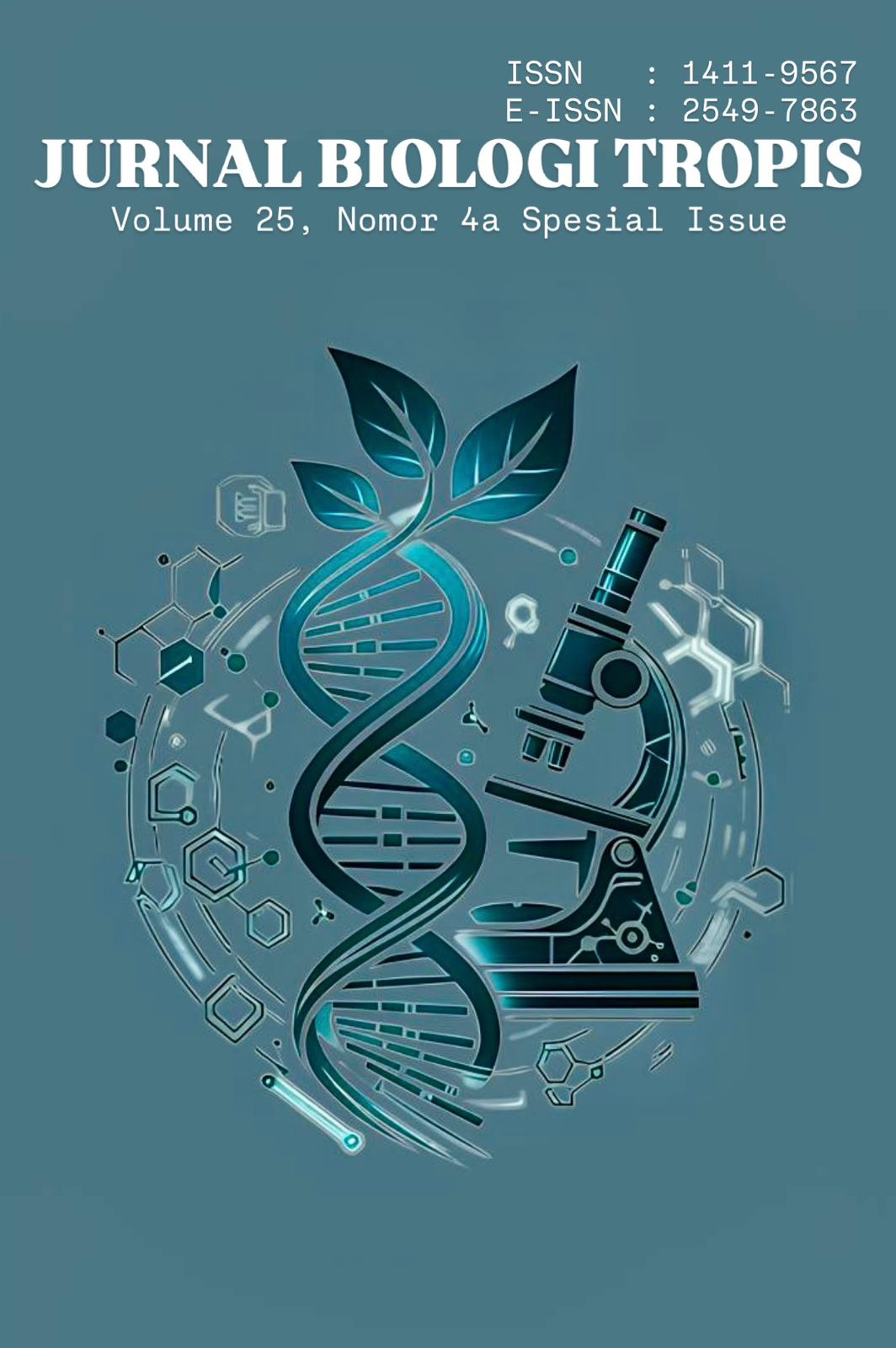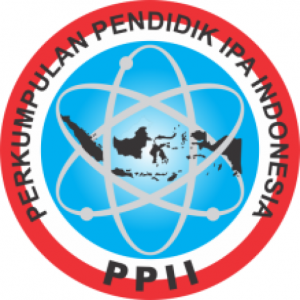Immunotherapeutic Targets in Liver Diseases: A Literature Review
Authors
Felya EvelinaDOI:
10.29303/jbt.v25i4a.10480Published:
2025-11-03Issue:
Vol. 25 No. 4a (2025): Special IssueKeywords:
ALD, NAFLD, Liver disease, Inflammation, ImmunotherapeuticArticles
Downloads
How to Cite
Downloads
Metrics
Abstract
Liver diseases, including alcoholic liver disease (ALD) and non-alcoholic fatty liver disease (NAFLD), are major global health problems associated with high morbidity and mortality. Both conditions share overlapping immunopathogenic mechanisms characterized by hepatocyte injury, oxidative stress, and chronic inflammation driven by innate and adaptive immune activation. This review aims to summarize recent advances in identifying immunotherapeutic targets for ALD and NAFLD. Key immune pathways involved include activation of Kupffer cells, neutrophil infiltration, and cytokine release (such as TNF-α, IL-1β, and IL-6), which promote hepatocellular damage and fibrosis. Emerging therapeutic strategies focus on inhibiting inflammasomes, modulating Toll-like receptor 4 (TLR4) signaling, targeting chemokine receptors (CCR2/CCR5), enhancing IL-22-mediated regeneration, and restoring gut-liver axis balance through probiotics or fecal microbiota transplantation. Furthermore, agents acting on metabolic immune cross talk, such as PPAR and FXR agonists, have shown promising outcomes in preclinical and clinical studies. Overall, immunotherapeutic approaches offer a promising avenue for mitigating liver inflammation and fibrosis. Continued exploration of these targets may lead to effective, individualized therapies for chronic liver disease.
References
A Phase 2, Double-Blind, Randomized Study Evaluating the Safety, Tolerability, and Efficacy of GS-4997 in Combination With Prednisolone Versus Prednisolone Alone in Subjects With Severe Alcoholic Hepatitis (AH). (2016). https://clinicaltrials.gov/study/NCT02854631
Abdelmegeed, M. A., Banerjee, A., Jang, S., Yoo, S.-H., Yun, J.-W., Gonzalez, F. J., Keshavarzian, A., & Song, B.-J. (2013). CYP2E1 potentiates binge alcohol-induced gut leakiness, steatohepatitis, and apoptosis. Free Radical Biology & Medicine, 65, 1238–1245. https://doi.org/10.1016/j.freeradbiomed.2013.09.009
Arab, J. P., Sehrawat, T. S., Simonetto, D. A., Verma, V. K., Feng, D., Tang, T., Dreyer, K., Yan, X., Daley, W. L., Sanyal, A., Chalasani, N., Radaeva, S., Yang, L., Vargas, H., Ibacache, M., Gao, B., Gores, G. J., Malhi, H., Kamath, P. S., & Shah, V. H. (2020). An Open‐Label, Dose‐Escalation Study to Assess the Safety and Efficacy of IL‐22 Agonist F‐652 in Patients With Alcohol‐associated Hepatitis. Hepatology, 72(2). https://journals.lww.com/hep/fulltext/2020/08000/an_open_label,_dose_escalation_study_to_assess_the.9.aspx
Basauri, A., González-Fernández, C., Fallanza, M., Bringas, E., Fernandez-Lopez, R., Giner, L., Moncalián, G., de la Cruz, F., & Ortiz, I. (2020). Biochemical interactions between LPS and LPS-binding molecules. Critical Reviews in Biotechnology, 40(3), 292–305. https://doi.org/10.1080/07388551.2019.1709797
Bashiardes, S., Shapiro, H., Rozin, S., Shibolet, O., & Elinav, E. (2016). Non-alcoholic fatty liver and the gut microbiota. Molecular Metabolism, 5(9), 782–794. https://doi.org/https://doi.org/10.1016/j.molmet.2016.06.003
Bougarne, N., Weyers, B., Desmet, S. J., Deckers, J., Ray, D. W., Staels, B., & De Bosscher, K. (2018). Molecular Actions of PPARα in Lipid Metabolism and Inflammation. Endocrine Reviews, 39(5), 760–802. https://doi.org/10.1210/er.2018-00064
Buzzetti, E., Pinzani, M., & Tsochatzis, E. A. (2016). The multiple-hit pathogenesis of non-alcoholic fatty liver disease (NAFLD). Metabolism - Clinical and Experimental, 65(8), 1038–1048. https://doi.org/10.1016/j.metabol.2015.12.012
Chalasani, N., Younossi, Z., Lavine, J. E., Charlton, M., Cusi, K., Rinella, M., Harrison, S. A., Brunt, E. M., & Sanyal, A. J. (2018). The diagnosis and management of nonalcoholic fatty liver disease: Practice guidance from the American Association for the Study of Liver Diseases. Hepatology, 67(1), 328–357. https://doi.org/10.1002/hep.29367
Chen, P., Stärkel, P., Turner, J. R., Ho, S. B., & Schnabl, B. (2015). Dysbiosis‐induced intestinal inflammation activates tumor necrosis factor receptor I and mediates alcoholic liver disease in mice. Hepatology, 61(3). https://journals.lww.com/hep/fulltext/2015/03000/dysbiosis_induced_intestinal_inflammation.21.aspx
Chiang, J. Y. L. (2017). Bile acid metabolism and signaling in liver disease and therapy. Liver Research, 1(1), 3–9. https://doi.org/10.1016/j.livres.2017.05.001
Cicione, C., Degirolamo, C., & Moschetta, A. (2012). Emerging role of fibroblast growth factors 15/19 and 21 as metabolic integrators in the liver. Hepatology, 56(6), 2404–2411. https://doi.org/10.1002/hep.25929
Devarbhavi, H., Asrani, S. K., Arab, J. P., Nartey, Y. A., Pose, E., & Kamath, P. S. (2023). Global burden of liver disease: 2023 update. Journal of Hepatology, 79(2), 516–537. https://doi.org/10.1016/j.jhep.2023.03.017
Drucker, D. J. (2016). The Cardiovascular Biology of Glucagon-like Peptide-1. Cell Metabolism, 24(1), 15–30. https://doi.org/10.1016/j.cmet.2016.06.009
Dushay, J., & Lai, M. (2019). Is Trimming the Fat Enough? Fibroblast Growth Factor 21 as An Emerging Treatment for Nonalcoholic Fatty Liver Disease. Hepatology, 70(5). https://journals.lww.com/hep/fulltext/2019/11000/is_trimming_the_fat_enough__fibroblast_growth.35.aspx
Engelmann, C., Habtesion, A., Hassan, M., Kerbert, A. J., Hammerich, L., Novelli, S., Fidaleo, M., Philips, A., Davies, N., Ferreira-Gonzalez, S., Forbes, S. J., Berg, T., Andreola, F., & Jalan, R. (2022). Combination of G-CSF and a TLR4 inhibitor reduce inflammation and promote regeneration in a mouse model of ACLF. Journal of Hepatology, 77(5), 1325–1338. https://doi.org/10.1016/j.jhep.2022.07.006
Forsyth, C. B., Farhadi, A., Jakate, S. M., Tang, Y., Shaikh, M., & Keshavarzian, A. (2009). Lactobacillus GG treatment ameliorates alcohol-induced intestinal oxidative stress, gut leakiness, and liver injury in a rat model of alcoholic steatohepatitis. Alcohol, 43(2), 163–172. https://doi.org/https://doi.org/10.1016/j.alcohol.2008.12.009
Francque, S., Szabo, G., Abdelmalek, M. F., Byrne, C. D., Cusi, K., Dufour, J.-F., Roden, M., Sacks, F., & Tacke, F. (2021). Nonalcoholic steatohepatitis: the role of peroxisome proliferator-activated receptors. Nature Reviews Gastroenterology & Hepatology, 18(1), 24–39. https://doi.org/10.1038/s41575-020-00366-5
Gao, B., & Bataller, R. (2011). Alcoholic liver disease: Pathogenesis and new therapeutic targets. Gastroenterology, 141(5), 1572–1585. https://doi.org/10.1053/j.gastro.2011.09.002
Guan, Y., Feng, D., Maccioni, L., Wang, Y., & Gao, B. (2024). New therapeutic target for alcohol-associated hepatitis (AH): AH-associated IL-8(+) neutrophils. EGastroenterology, 2(4). https://doi.org/10.1136/egastro-2024-100166
Gupta, N. A., Mells, J., Dunham, R. M., Grakoui, A., Handy, J., Saxena, N. K., & Anania, F. A. (2010). Glucagon-Like Peptide-1 Receptor Is Present on Human Hepatocytes and Has A Direct Role in Decreasing Hepatic Steatosisin Vitroby Modulating Elements of the Insulin Signaling Pathway. Hepatology, 51(5). https://journals.lww.com/hep/fulltext/2010/05000/glucagon_like_peptide_1_receptor_is_present_on.16.aspx
Inoue, M., Hayashi, A., Taguchi, T., Arai, R., Sasaki, S., Takano, K., Inoue, Y., & Shichiri, M. (2019). Effects of canagliflozin on body composition and hepatic fat content in type 2 diabetes patients with non-alcoholic fatty liver disease. Journal of Diabetes Investigation, 10(4), 1004–1011. https://doi.org/10.1111/jdi.12980
Jonas, D. E., Amick, H. R., Feltner, C., Bobashev, G., Thomas, K., Wines, R., Kim, M. M., Shanahan, E., Gass, C. E., Rowe, C. J., & Garbutt, J. C. (2014). Pharmacotherapy for Adults With Alcohol Use Disorders in Outpatient Settings: A Systematic Review and Meta-analysis. JAMA, 311(18), 1889–1900. https://doi.org/10.1001/jama.2014.3628
Ju, C., & Tacke, F. (2016). Hepatic macrophages in homeostasis and liver diseases: From pathogenesis to novel therapeutic strategies. Cellular and Molecular Immunology, 13(3), 316–327. https://doi.org/10.1038/cmi.2015.104
Kernan, W. N., Viscoli, C. M., Furie, K. L., Young, L. H., Inzucchi, S. E., Gorman, M., Guarino, P. D., Lovejoy, A. M., Peduzzi, P. N., Conwit, R., Brass, L. M., Schwartz, G. G., Adams, H. P., Berger, L., Carolei, A., Clark, W., Coull, B., Ford, G. A., Kleindorfer, D., … Winder, T. R. (2016). Pioglitazone after Ischemic Stroke or Transient Ischemic Attack. New England Journal of Medicine, 374(14), 1321–1331. https://doi.org/10.1056/nejmoa1506930
Kubes, P., & Jenne, C. (2018). Immune Responses in the Liver. Annual Review of Immunology, 36, 247–277. https://doi.org/10.1146/annurev-immunol-051116-052415
Leung, C., Rivera, L., Furness, J. B., & Angus, P. W. (2016). The role of the gut microbiota in NAFLD. Nature Reviews Gastroenterology & Hepatology, 13(7), 412–425. https://doi.org/10.1038/nrgastro.2016.85
Loomba, R., Mohseni, R., Lucas, K. J., Gutierrez, J. A., Perry, R. G., Trotter, J. F., Rahimi, R. S., Harrison, S. A., Ajmera, V., Wayne, J. D., O’Farrell, M., McCulloch, W., Grimmer, K., Rinella, M., Wai-Sun Wong, V., Ratziu, V., Gores, G. J., Neuschwander-Tetri, B. A., & Kemble, G. (2021). TVB-2640 (FASN Inhibitor) for the Treatment of Nonalcoholic Steatohepatitis: FASCINATE-1, a Randomized, Placebo-Controlled Phase 2a Trial. Gastroenterology, 161(5), 1475–1486. https://doi.org/10.1053/j.gastro.2021.07.025
Louvet, A., Naveau, S., Abdelnour, M., Ramond, M.-J., Diaz, E., Fartoux, L., Dharancy, S., Texier, F., Hollebecque, A., Serfaty, L., Boleslawski, E., Deltenre, P., Canva, V., Pruvot, F.-R., & Mathurin, P. (2007). The Lille model: A new tool for therapeutic strategy in patients with severe alcoholic hepatitis treated with steroids. Hepatology, 45(6). https://journals.lww.com/hep/fulltext/2007/06000/the_lille_model__a_new_tool_for_therapeutic.6.aspx
Mandrekar, P., & Szabo, G. (2009). Signalling pathways in alcohol-induced liver inflammation. Journal of Hepatology, 50(6), 1258–1266. https://doi.org/10.1016/j.jhep.2009.03.007
Mathurin, P., O’Grady, J., Carithers, R. L., Phillips, M., Louvet, A., Mendenhall, C. L., Ramond, M.-J., Naveau, S., Maddrey, W. C., & Morgan, T. R. (2011). Corticosteroids improve short-term survival in patients with severe alcoholic hepatitis: meta-analysis of individual patient data. Gut, 60(2), 255–260. https://doi.org/10.1136/gut.2010.224097
Moreno, C., Deltenre, P., Senterre, C., Louvet, A., Gustot, T., Bastens, B., Hittelet, A., Piquet, M. A., Laleman, W., Orlent, H., Lasser, L., Sersté, T., Starkel, P., De Koninck, X., Negrin Dastis, S., Delwaide, J., Colle, I., De Galocsy, C., Francque, S., … Trépo, E. (2016). Intensive Enteral Nutrition Is Ineffective for Patients with Severe Alcoholic Hepatitis Treated with Corticosteroids. Gastroenterology, 150(4), 903-910.e8. https://doi.org/10.1053/j.gastro.2015.12.038
Moser, M. A., & Chun, O. K. (2016). Vitamin C and heart health: A review based on findings from epidemiologic studies. International Journal of Molecular Sciences, 17(8). https://doi.org/10.3390/ijms17081328
Mota, M., Banini, B. A., Cazanave, S. C., & Sanyal, A. J. (2016). Molecular mechanisms of lipotoxicity and glucotoxicity in nonalcoholic fatty liver disease. Metabolism - Clinical and Experimental, 65(8), 1049–1061. https://doi.org/10.1016/j.metabol.2016.02.014
Mudaliar, S., Henry, R. R., Sanyal, A. J., Morrow, L., Marschall, H., Kipnes, M., Adorini, L., Sciacca, C. I., Clopton, P., Castelloe, E., Dillon, P., Pruzanski, M., & Shapiro, D. (2013). Efficacy and Safety of the Farnesoid X Receptor Agonist Obeticholic Acid in Patients With Type 2 Diabetes and Nonalcoholic Fatty Liver Disease. Gastroenterology, 145(3), 574-582.e1. https://doi.org/10.1053/j.gastro.2013.05.042
Nasiri-Ansari, N., Nikolopoulou, C., Papoutsi, K., Kyrou, I., Mantzoros, C. S., Kyriakopoulos, G., Chatzigeorgiou, A., Kalotychou, V., Randeva, M. S., Chatha, K., Kontzoglou, K., Kaltsas, G., Papavassiliou, A. G., Randeva, H. S., & Kassi, E. (2021). Empagliflozin attenuates non-alcoholic fatty liver disease (NAFLD) in high fat diet fed ApoE(-/-) mice by activating autophagy and reducing ER stress and apoptosis. International Journal of Molecular Sciences, 22(2), 1–21. https://doi.org/10.3390/ijms22020818
Neal, B., Perkovic, V., Mahaffey, K. W., de Zeeuw, D., Fulcher, G., Erondu, N., Shaw, W., Law, G., Desai, M., & Matthews, D. R. (2017). Canagliflozin and Cardiovascular and Renal Events in Type 2 Diabetes. New England Journal of Medicine, 377(7), 644–657. https://doi.org/10.1056/nejmoa1611925
Nguyen-Khac, E., Thevenot, T., Piquet, M.-A., Benferhat, S., Goria, O., Chatelain, D., Tramier, B., Dewaele, F., Ghrib, S., Rudler, M., Carbonell, N., Tossou, H., Bental, A., Bernard-Chabert, B., & Dupas, J.-L. (2011). Glucocorticoids plus N-acetylcysteine in severe alcoholic hepatitis. The New England Journal of Medicine, 365(19), 1781–1789. https://doi.org/10.1056/NEJMoa1101214
O’Shea, R. S., Dasarathy, S., McCullough, A. J., & Gastroenterology, P. G. C. of the A. A. for the S. of L. D. and the P. P. C. of the A. C. of. (2010). Alcoholic Liver Disease. Hepatology, 51(1). https://journals.lww.com/hep/fulltext/2010/01000/alcoholic_liver_disease.37.aspx
Oseini, A. M., & Sanyal, A. J. (2017). Therapies in non-alcoholic steatohepatitis (NASH). Liver International, 37(S1), 97–103. https://doi.org/https://doi.org/10.1111/liv.13302
Pradhan, R., Yin, H., Yu, O., & Azoulay, L. (2022). Glucagon-Like Peptide 1 Receptor Agonists and Sodium–Glucose Cotransporter 2 Inhibitors and Risk of Nonalcoholic Fatty Liver Disease Among Patients With Type 2 Diabetes. Diabetes Care, 45(4), 819–829. https://doi.org/10.2337/dc21-1953
Roeb, E. (2021). Non-alcoholic fatty liver diseases: current challenges and future directions. Annals of Translational Medicine, 9(8), 726–726. https://doi.org/10.21037/atm-20-3760
Sciarrillo, C. M., Keirns, B. H., Koemel, N. A., Anderson, K. L., & Emerson, S. R. (2021). Fibroblast Growth Factor 19: Potential modulation of hepatic metabolism for the treatment of non-alcoholic fatty liver disease. Liver International, 41(5), 894–904. https://doi.org/https://doi.org/10.1111/liv.14802
Sehrawat, T. S., Liu, M., & Shah, V. H. (2020). The knowns and unknowns of treatment for alcoholic hepatitis. The Lancet. Gastroenterology & Hepatology, 5(5), 494–506. https://doi.org/10.1016/S2468-1253(19)30326-7
Shen, H., Liangpunsakul, S., Iwakiri, Y., Szabo, G., & Wang, H. (2025). Immunological mechanisms and emerging therapeutic targets in alcohol-associated liver disease. Cellular & Molecular Immunology, 22(10), 1190–1204. https://doi.org/10.1038/s41423-025-01291-w
Sunny, N. E., Parks, E. J., Browning, J. D., & Burgess, S. C. (2011). Excessive hepatic mitochondrial TCA cycle and gluconeogenesis in humans with nonalcoholic fatty liver disease. Cell Metabolism, 14(6), 804–810. https://doi.org/10.1016/j.cmet.2011.11.004
Svegliati-Baroni, G., Saccomanno, S., Rychlicki, C., Agostinelli, L., De Minicis, S., Candelaresi, C., Faraci, G., Pacetti, D., Vivarelli, M., Nicolini, D., Garelli, P., Casini, A., Manco, M., Mingrone, G., Risaliti, A., Frega, G. N., Benedetti, A., & Gastaldelli, A. (2011). Glucagon-like peptide-1 receptor activation stimulates hepatic lipid oxidation and restores hepatic signalling alteration induced by a high-fat diet in nonalcoholic steatohepatitis. Liver International, 31(9), 1285–1297. https://doi.org/https://doi.org/10.1111/j.1478-3231.2011.02462.x
Szabo, G., Petrasek, J., & Bala, S. (2012). Innate Immunity and Alcoholic Liver Disease. Digestive Diseases, 30(Suppl. 1), 55–60. https://doi.org/10.1159/000341126
Taru, V., Szabo, G., Mehal, W., & Reiberger, T. (2024). Inflammasomes in chronic liver disease: Hepatic injury, fibrosis progression and systemic inflammation. Journal of Hepatology, 81(5), 895–910. https://doi.org/10.1016/j.jhep.2024.06.016
Teshome, G., Ambachew, S., Fasil, A., & Abebe, M. (2020).
Efficacy of Glucagon-Like Peptide-1 Analogs in Nonalcoholic Fatty Liver Disease: A Systematic Review
. Hepatic Medicine: Evidence and Research, Volume 12, 139–151. https://doi.org/10.2147/hmer.s265631Thursz, M., Gual, A., Lackner, C., Mathurin, P., Moreno, C., Spahr, L., Sterneck, M., & Cortez-Pinto, H. (2018). EASL Clinical Practice Guidelines: Management of alcohol-related liver disease. Journal of Hepatology, 69(1), 154–181. https://doi.org/10.1016/j.jhep.2018.03.018
Tian, F., Chi, F., Wang, G., Liu, X., Zhang, Q., Chen, Y., Zhang, H., & Chen, W. (2015). Lactobacillus rhamnosus CCFM1107 treatment ameliorates alcohol-induced liver injury in a mouse model of chronic alcohol feeding. Journal of Microbiology, 53(12), 856–863. https://doi.org/10.1007/s12275-015-5239-5
Wang, H., Mehal, W., Nagy, L. E., & Rotman, Y. (2021). Immunological mechanisms and therapeutic targets of fatty liver diseases. Cellular and Molecular Immunology, 18(1), 73–91. https://doi.org/10.1038/s41423-020-00579-3
Xu, H., & Wang, H. (2022). Immune cells in alcohol-related liver disease. Liver Research, 6(1), 1–9. https://doi.org/10.1016/j.livres.2022.01.001
Yoon, E. L., & Kim, W. (2023). Current and future treatment for alcoholic-related liver diseases. Journal of Gastroenterology and Hepatology (Australia), 38(8), 1218–1226. https://doi.org/10.1111/jgh.16257
Zardi, E. M., Navarini, L., Sambataro, G., Piccinni, P., Sambataro, F. M., Spina, C., & Dobrina, A. (2013). Hepatic PPARs: Their Role in Liver Physiology, Fibrosis and Treatment. In Current Medicinal Chemistry (Vol. 20, Issue 27, pp. 3370–3396). https://doi.org/http://dx.doi.org/10.2174/09298673113209990136
Zarei, M., Pizarro-Delgado, J., Barroso, E., Palomer, X., & Vázquez-Carrera, M. (2020). Targeting FGF21 for the Treatment of Nonalcoholic Steatohepatitis. Trends in Pharmacological Sciences, 41(3), 199–208. https://doi.org/10.1016/j.tips.2019.12.005
Zheng, Y., Ley, S. H., & Hu, F. B. (2018). Global aetiology and epidemiology of type 2 diabetes mellitus and its complications. Nature Reviews Endocrinology, 14(2), 88–98. https://doi.org/10.1038/nrendo.2017.151
License
Copyright (c) 2025 Felya Evelina

This work is licensed under a Creative Commons Attribution 4.0 International License.

Jurnal Biologi Tropis is licensed under a Creative Commons Attribution 4.0 International License.
The copyright of the received article shall be assigned to the author as the owner of the paper. The intended copyright includes the right to publish the article in various forms (including reprints). The journal maintains the publishing rights to the published articles.
Authors are permitted to disseminate published articles by sharing the link/DOI of the article at the journal. Authors are allowed to use their articles for any legal purposes deemed necessary without written permission from the journal with an acknowledgment of initial publication to this journal.


























